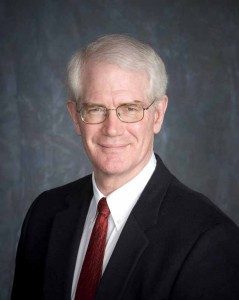Increasingly, news about health and medicine mentions inflammation. There is a reason for this new emphasis on an old syndrome.
Physicians and researchers have come to recognize that inflammation is a major component of many chronic diseases, ranging from some heart conditions to epilepsy. Science has made great strides in understanding the many molecules and interactions involved in the inflammatory process, and today’s investigators look for increases in these molecules to indicate underlying inflammation. And they have realized that inflammation causes much more damage than formerly thought.
This article looks at several chronic diseases in which inflammation plays a part.
What is inflammation?
Traditionally, inflammation has been described by four Latin words: rubor (redness), dolor (pain), calor (heat), and tumor (swelling.) It is the body’s response to a noxious stimulus; envision that painful red swelling around a bacteria-laden splinter.
More broadly, inflammation is the body’s response to injury or destruction of tissue; envision tendonitis or appendicitis. Auto-immune diseases such as systemic lupus erythematosis or rheumatoid arthritis, in which the immune system mistakenly attacks the body’s own tissues are recognized as classic inflammatory diseases.
When the inflammatory response works correctly, it follows a biologic schedule of turning on and turning off. First, specific cells that reside in the tissues recognize foreign invaders like microorganisms. These cells also recognize byproducts coming from the body’s own injured cells.
The resident cells then send out chemical signals to attract white cells—the fighting cells of the blood— and allow them to escape the circulation by causing capillaries to become leaky. Other chemical signals direct the white cells to move to the site of injury.
These chemical signals are small molecules, somewhat analogous to hormones, but not made by glands. These molecules are called pro-inflammatory cytokines. Cytokines can initiate many processes, including the production of molecules that cause pain.
Greatly simplified, the first wave of white cells (called granulocytes) begins to attack and ingest invading organisms or destroy the injured tissue with a variety of weapons. These weapons include enzymes that digest proteins and activated oxygen compounds.
The first wave also secretes more pro-inflammatory cytokines, including some that attract a different kind of white cell called monocyte-macrophages to finish the cleanup. These pro-inflammatory cytokines set other processes in motion. For example, they tell connective tissue cells to make more structural proteins.

In the well-oiled inflammatory machine, soon after reaching the site of injury the first wave of white cells sets the healing process in motion. They secrete anti-inflammatory cytokines—a different set of small molecules that promote death and cleanup of the warrior white cells and cessation of collateral damage tissue destruction.
The process is very old. As Dr. Douglas Mann, Chief of Cardiology at Washington University Medical School points out, it began to evolve in organisms as primitive as protozoans, with short life spans. For them a short emergency response was sufficient.
Human beings, on the other hand, live for a long time. The complex inflammatory program tends to develop weaknesses with time. It may not get completely turned off. And so a process that was supposed to be an emergency repair becomes a chronic condition.
Inflammation and Heart Disease
Heart attacks are most often the end result of an inflammatory process.
Inflammation causes the plaques that characterize atherosclerosis (narrowing of the arteries caused by fatty deposits). The original insult is excess low density lipoprotein (LDL -)bound cholesterol in the blood. Resident blood vessel scavengers called macrophages take up LDL and become ‘foam cells.’
These activated foam cells accumulate in the vessel walls, forming the ‘fatty streaks’ of atherosclerotic plaques. As a result of ‘activation’ they also send out pro-inflammatory cytokines that recruit more activated white cells whose secretions may cause the plaque to rupture. Rupture can lead to a blood clot.
If a blood clot blocks circulation to a tissue, the tissue will begin to die.
A blood clot in a coronary artery causes a heart attack, during which cardiac tissue dies. The dead cells release their contents, many of which bind to specific receptors that initiate inflammation. Dr. Mann’s research has shown that products of dead heart cells and invading microorganisms both use the same machinery known as the innate immune response to begin the inflammatory process.
Ideally, the inflammatory progression will get rid of the dead and dying tissue with a minimum of damage to healthy tissue and healing will begin. Unfortunately, Mann points out, most heart attacks occur in older people who are likely to have problems in turning off inflammation. There is no selective pressure against inflammation mishaps because most heart attack patients have aged beyond their reproductive years.
The low-dose baby aspirin that many older adults take routinely inhibits clotting, but is not large enough to be anti-inflammatory. The usual non-steroidal anti-inflammatory drugs such as naproxin and ibuprofen are not used either to prevent or to treat heart attacks. Statin drugs may have some anti-inflammatory properties in addition to lowering LDL cholesterol.
Systemic Lupus Erythematosis

Dr. Terry Moore, Director of Rheumatology at St. Louis University School of Medicine, calls systemic lupus erythematosis the prototype of inflammatory reactive conditions. It is the most common disease of young women in the United States.
Lupus is an autoimmune disease. For reasons unknown, in autoimmune diseases like lupus and rheumatoid arthritis the body makes antibodies to itself rather than invaders. The antibodies form soluble complexes with body proteins. Because these complexes invade many different tissues, lupus takes many forms. Symptoms vary depending upon the organs infected, although 90% of patients have some skin involvement.
Once antibody complexes settle in a tissue, they set up an inflammatory process that attacks the tissue. White cells are recruited, and they release destructive enzymes. The destructive enzymes create more products that promote even more inflammation with its attendant tissue destruction.
Treatment with anti-inflammatory drugs does not help lupus patients. As Moore puts it, “the immune system is too revved up.” These patients must be treated with the same type immune suppressing agents that are used for transplant patients.
Interestingly, an anti-malarial drug called hydroxychloroquine helps most lupus patients. This drug stabilizes the membranes that surround many of the protein-destroying enzymes. When the destructive enzymes are sequestered, less tissue is destroyed, and fewer pro-inflammatory molecules are released.
Epilepsy
About one in every 200 people has epilepsy reports Dr. Jacqueline French of New York University. It is more common than Parkinson’s, multiple sclerosis, and ALS combined. In fact, according to an Institute of Medicine report, one in twenty-three people will have active epilepsy at some point in their lives. Yet because of a stigma attached to seizures, this condition is often thought to be rare.
Epileptic seizures can have many causes. Known causes range from fever to developmental abnormalities. But inflammation in the brain after seizure seems to be nearly universal.
Patients with severe epilepsy originating in a focal area of the brain may have that area surgically removed. Pathology of these lesions shows inflammatory cells and pro-inflammatory cytokines not present in normal brains. One investigator has shown that the number of inflammatory cells is higher if the last seizure came shortly before surgery. Animal models are consistent with human pathology, and anti-inflammatory drugs will quiet down the seizures.
In epilepsy, then, inflammation is a result of seizure. The inflammatory process apparently sensitizes the neurons so that they are more excitable. Says French, “We believe this is a vicious cycle. Inflammation from the first seizure contributes to the next seizure.”
She is currently studying the effects of an experimental drug that inhibits the production of a particular pro-inflammatory cytokine. When this cytokine interacts with its cellular receptor, it leads to the release of excitatory neurotransmitters. The drug gave promising anti-seizure results in animal models. Testing in humans has now progressed to stage 2b, meaning that the drug seems to be safe.
Since post-seizure inflammation appears to be common to all forms of epilepsy, success with the experimental drug would be very exciting to French because they might be able to help a great variety of patients.
Cancer
Cancer is a term used to classify a huge spectrum of diseases. It makes sense that inflammation plays different roles depending upon the type of cancer.

Physicians have long been aware that the risk of colon cancer is significantly reduced in people who regularly take non-steroidal anti-inflammatory (nsaids) drugs like aspirin or ibuprofen.
As Dr. Siobhan Sutcliffe, Assistant Professor of Surgery at Washington University Medical School explains, in some cancers inflammation is a primary cause while in others it is a co-factor.
Some infections set up persistent inflammation that leads to cancer. Helicobacter infections in the stomach and hepatitis B and C in the liver are both risk factors for developing cancer. (Helicobacter is the bacterium that causes stomach ulcers.) The current hypothesis is that the inflammatory response to these infectious agents harms normal cells as well as the invaders. If the inflammation persists, then some by-products such as oxygen radicals will with time damage the DNA. Some changes in a cell’s DNA can lead to cancer.
Inflammation can also be a co-factor. Infection with human papillomavirus (HPV) is a risk factor for cervical cancer. But not everyone infected with HPV develops cancer. HPV infection itself is not inflammatory. However, epidemiology suggests that HPV-infected patients who have also contracted chlamydial infections are at significantly higher risk for cervical cancer, independent of their HPV infection. Chlamdia causes inflammation, hypothesized to be a co-factor in the development of this cancer.
Dr. Sutcliffe studies the epidemiology of prostate cancer. The cause of prostate cancer is not known, but the current hypothesis is that inflammation is involved because certain lesions are usually found associated with inflammatory cells.
Alzheimer’s Disease

The role of inflammation in Alzheimer’s disease is quite complicated, states Dr. John C. Morris, Professor of Neurology at Washington University School of Medicine. The pathological marker of Alzheimer’s is the ‘senile plaque’, composed of tangles of a protein called β-amyloid. Brains with an abundance of these plaques show inflammatory activation of resident cells called microglia.
These non-neuronal microglia are analogous to the scavenging white cells of the blood. When activated they try to attack and remove the lesions and lesion-containing cells. In the process they secrete reactive oxygen, protein-destroying enzymes, and pro-inflammatory cytokines.
As in other inflammatory situations, the destruction caused by the cytotoxic substances does not discriminate between diseased and normal cells.
Past epidemiological studies showed that people with rheumatoid arthritis—and who therefore routinely use anti-inflammatory drugs—may have a lower risk of developing Alzheimer dementia. However, use of anti-inflammatory medicines has not been successful in patients with Alzheimer dementia.
“There is no current evidence to support taking anti-inflammatories to either prevent or treat Alzheimer dementia,” states Morris.
He suggests that in light of the repeated failures of single drugs directed against amyloid plaques to show benefit in people with Alzheimer dementia, future treatment strategies should involve combinations of drugs, one of which may well be an anti-inflammatory agent.
Type 2 Diabetes

The role of inflammation in type 2 diabetes is still a bit controversial, explains Dr. Fumihiko Urano, Schecter professor of medicine at Washington University School of Medicine. He believes that low-grade chronic inflammation plays a role in the progression of the disease. However, much of the evidence is somewhat indirect.
Most of the evidence comes from studies involving a particular pro-inflammatory cytokine called IL-1 in the pancreas. In laboratory experiments this IL-1 molecule has definitely been shown to harm the pancreatic β-cells that produce insulin. Autopsy pathology of the pancreas from type II diabetic patients shows more immune cells with increased concentration of IL-1 than in normal patients. That increase in IL-1 could lead to β-cell damage, and thus impaired production of insulin.
A double-blind study in which patients were treated with an antagonist to the IL-1 receptor showed definite improvement in a number of diabetic markers in those given the drug, indicating better β-cell function. These patients also showed reduced markers of inflammation in the circulation.
Physicians disagree on whether treatment of type 2 diabetic patients with aspirin as an anti-inflammatory drug should be recommended. Although some trials did show improvement of blood glucose levels when patients were given high doses of aspirin, those same doses can cause stomach bleeding. Salsalate, a precursor molecule in aspirin synthesis is anti-inflammatory, but does not cause bleeding. A recent clinical trial show this drug worked well in treating type 2 diabetes.
Urano’s present research focuses on the conversion of IL-1 from an inactive precursor to the active pro-inflammatory cytokine. He uses cultured pancreatic β-cells from humans and mice to study the enzyme that effects that conversion.
Dr. Luigi Fontana of Washington University School of Medicine studies the effects of caloric restriction. He points out that obesity often accompanies type II diabetes. Obese patients have increased pro-inflammatory cytokines in their circulation. These cytokines could be the link between obesity and the development of type II diabetes.
In summary
Many of the diseases that develop with age have a chronic inflammatory component. As Dr. Mann the cardiologist emphasized, the complex system of emergency action and cessation of action originally evolved to function in the short term for creatures that lived short lives. The machinery of inflammation is delicately balanced, and the passage of time increases the probability that it will become unbalanced.
Medicine today is beginning to take the role of inflammation into account in devising treatments. As seen, even when the inflammatory process does not cause the disease, in some cases like epilepsy it may worsen the disease. Treatment with anti-inflammatory drugs may be useful. In other cases, as with lupus, inflammation is responsible for disease symptoms, but they must be treated with immune suppressors and steroids. In yet other cases, as with type II diabetes or Alzheimer’s, the role of the inflammatory component is still under investigation. Finally, with some cancers, inflammation can be a cause or a co-factor.
This article was originally published in the St. Louis Beacon.
